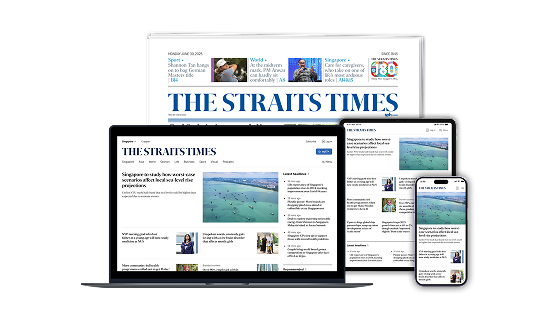US Fed raises interest rates to highest level in 22 years, leaves door open for hike in September
Sign up now: Get ST's newsletters delivered to your inbox

Fed chairman Jerome Powell cautioned against expecting any near-term easing in rates.
PHOTO: REUTERS
Follow topic:
WASHINGTON - The Federal Reserve raised interest rates by a quarter of a percentage point on Wednesday, taking borrowing costs in the United States to their highest level in more than 22 years.
The hike, the Fed’s 11th in its last 12 meetings, set the benchmark overnight interest rate in the 5.25 per cent to 5.5 per cent range.
It was widely anticipated after recent reports showed an economy that has largely withstood higher interest rates so far. But ahead of Wednesday’s decision, investors saw a second increase as less certain, in part because of data on consumer prices showing inflation receded sharply in June.
“The (Federal Open Market) Committee will continue to assess additional information and its implications for monetary policy,” the Fed said in language that has little changed from its June statement
As it stated in June, the Fed said it would watch incoming data and study the impact of its rate hikes on the economy “in determining the extent of additional policy firming that may be appropriate” to reach its 2 per cent inflation target.
Though inflation data since the Fed’s June 13 to 14 meeting has been weaker than expected,
Fed chairman Jerome Powell said any future policy decisions would be made on a meeting-by-meeting basis and that in the current environment, officials can only provide limited guidance about what is next for monetary policy.
But he did not rule out action if it was deemed necessary.
“It is certainly possible that we would raise the (federal) funds rate again at the September meeting if the data warranted, and I would also say it’s possible that we would choose to hold steady at that meeting” if that was the right policy call, Mr Powell said in a press conference after the release of the policy statement.
But Mr Powell cautioned against expecting any near-term easing in rates. “We’ll be comfortable cutting rates when we’re comfortable cutting rates, and that won’t be this year,” Mr Powell said.
Yields on both the two- and 10-year Treasury notes moved down modestly from levels right before the release of the Fed’s policy statement, while US stocks ended mixed.
Futures markets showed bets on the path of Fed rate increases over the remainder of the year were little changed, seeing small odds of a rise in September.
“The forward guidance remains unchanged as the committee leaves the door open to further rate hikes if inflation does not continue to trend lower,” said Ms Kathy Bostjancic, chief economist at Nationwide.
“Our view is the Fed is likely done with rate hikes for this cycle, since continued easing of inflation will passively lead to tighter policy as the Fed holds the nominal fed funds rate steady into 2024.”
‘Moderate’ growth
Key measures of inflation remain more than double the Fed’s target, and the economy by many measures, including a low 3.6 per cent unemployment rate,
Job gains remain “robust”, the Fed said, while it described the economy as growing at a “moderate” pace, a slight upgrade from the “modest” pace seen as at the June meeting.
The US government on Thursday is expected to report that the economy grew at a 1.8 per cent annual pace in the second quarter, according to economists polled by Reuters.
Mr Powell said he is still holding out hope the economy can achieve a “soft landing”, a scenario in which inflation falls, unemployment remains relatively low, and a recession is avoided.
“My base case is we’ll be able to achieve inflation moving back down to our target without the kind of really significant downturn that results in high levels of job losses,” he said, while noting that outlook is “a long way from assured”.
He also noted that Fed staff economists are no longer predicting a recession, as they have at recent meetings.
With about eight weeks until the next Fed meeting, a longer-than-usual interlude, continued moderation in the pace of price increases could make this the last rate hike in a process that began with a cautious quarter-percentage-point increase in March 2022 before accelerating into the most rapid monetary tightening since the 1980s.
In the most recent economic projections from Fed policymakers, 12 of 18 officials expected at least one more quarter-percentage-point increase would be needed by the end of 2023. REUTERS, BLOOMBERG

